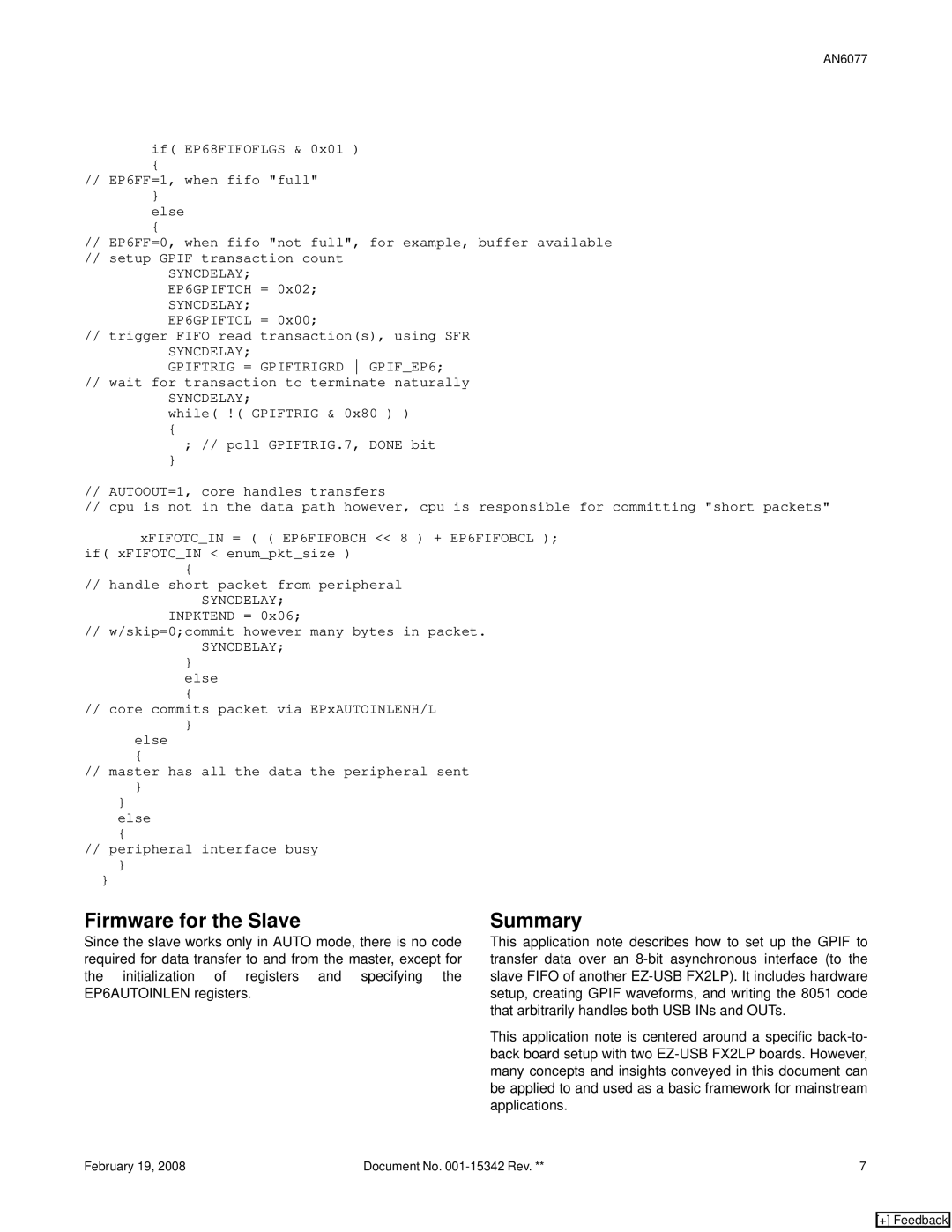AN6077
if( EP68FIFOFLGS & 0x01 )
{
//EP6FF=1, when fifo "full"
}
else
{
//EP6FF=0, when fifo "not full", for example, buffer available
//setup GPIF transaction count
SYNCDELAY;
EP6GPIFTCH = 0x02;
SYNCDELAY;
EP6GPIFTCL = 0x00;
//trigger FIFO read transaction(s), using SFR SYNCDELAY;
GPIFTRIG = GPIFTRIGRD GPIF_EP6;
//wait for transaction to terminate naturally
SYNCDELAY;
while( !( GPIFTRIG & 0x80 ) )
{
; // poll GPIFTRIG.7, DONE bit
}
//AUTOOUT=1, core handles transfers
//cpu is not in the data path however, cpu is responsible for committing "short packets"
xFIFOTC_IN = ( ( EP6FIFOBCH << 8 ) + EP6FIFOBCL ); if( xFIFOTC_IN < enum_pkt_size )
{
//handle short packet from peripheral
SYNCDELAY;
INPKTEND = 0x06;
//w/skip=0;commit however many bytes in packet.
SYNCDELAY;
}
else
{
// core commits packet via EPxAUTOINLENH/L
}
else
{
//master has all the data the peripheral sent
}
}
else
{
// peripheral interface busy
}
}
Firmware for the Slave
Since the slave works only in AUTO mode, there is no code required for data transfer to and from the master, except for the initialization of registers and specifying the EP6AUTOINLEN registers.
Summary
This application note describes how to set up the GPIF to transfer data over an
This application note is centered around a specific
February 19, 2008 | Document No. | 7 |
[+] Feedback
